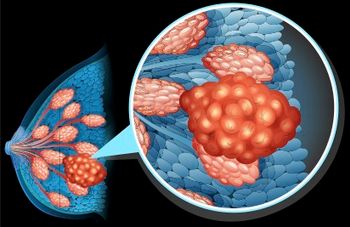
Oncology NEWS International
- Oncology NEWS International Vol 17 No 11
- Volume 17
- Issue 11
Birth length of at least 50 cm may bump up breast ca risk
An increase in birth length by 2 cm is associated with a 9% increase in breast cancer risk, according to a study reported in PLoS Medicine, online. Isabel dos Santos Silva, MD, PhD, a professor of epidemiology at the London School of Hygiene and Tropical Medicine and colleagues, examined 32 studies involving 22,058 breast cancer cases.
An increase in birth length by 2 cm is associated with a 9% increase in breast cancer risk, according to a study reported in PLoS Medicine, online. Isabel dos Santos Silva, MD, PhD, a professor of epidemiology at the London School of Hygiene and Tropical Medicine and colleagues, examined 32 studies involving 22,058 breast cancer cases.
The researchers found the strongest link between breast cancer and birth size occurred between a length at birth of greater than or equal to 50 cm. In addition to length, a 0.5 kg increment in birth weight, greater than or equal to 3.5 kg, was associated with an estimated 7% increase in the risk of breast cancer (PLoS Med 5: e193, 2008).
“Assuming causality, we estimated that about 5% of all breast cancers in developed countries could be attributable to high birth size,” the researchers wrote. They also said the association between birth size and breast cancer appeared to be largely independent of known risk factors.
“Further research is needed to unravel the biological mechanisms underlying the birth size-breast cancer association,” wrote Dr. Silva’s group.
In an accompanying editorial, Pagona Lagiou, MD, PhD, and Dimitrios Trichopoulos, MD, PhD, both from the epidemiology department at the Harvard School of Public Health in Boston, said while the relative size of the eff ects is small, the individual studies driving the conclusion were of sound epidemiological design. The research relied on objectively documented birth size parameters, allowing little room for bias (PLoS Med 5: e194, 2008).
Articles in this issue
about 17 years ago
Elaine Jaffe: At the forefront of clinical lymphoma biologyabout 17 years ago
Clinical trials struggle to recruit, retain patientsabout 17 years ago
Global financial woes threaten new UK radiotherapy centersabout 17 years ago
UK health service urges drug cost cutsabout 17 years ago
Obama, NCCN win endorsements in online poll surveysabout 17 years ago
Colonoscopy proves cost-effective in young patientsabout 17 years ago
Philips Healthcare extends contract for image-guided oncologyabout 17 years ago
US Oncology teams with RTOG to boost trial enrollmentabout 17 years ago
Court finds Roche infringed on Amgen’s erythropoietin patentsNewsletter
Stay up to date on recent advances in the multidisciplinary approach to cancer.



















































































